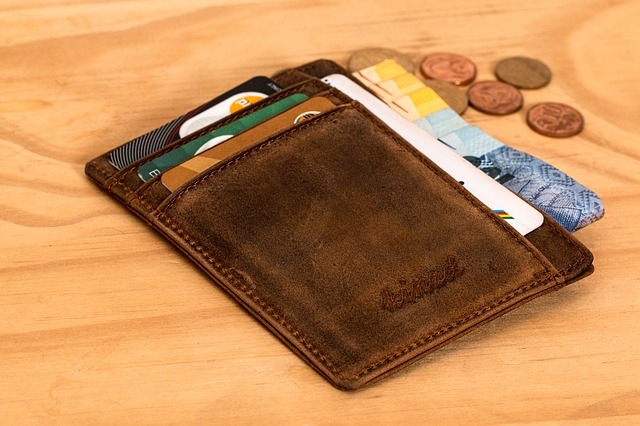— September 28, 2017

stevepb / Pixabay
Before you can get your business up and running, you need to be able to take payments. Whether you’re running a brick-and-mortar store or getting wrapped up in the world of eCommerce, it’s likely that you’re going to need to take credit card and debit card payments.
This isn’t always as simple as just setting up a merchant account. There are many merchant processors that you can use to take payments and there are many different types of payment you can accept. Here is a Sole Proprietor’s Guide to Payments so that there will be no questions along the way.
Sole Proprietor’s Guide to Payments
We live in a world of digital cash. Companies need to invest in the right payment systems to cater to their customers and to maximize their revenue potential. Compounding this is the fact that payment systems are now often integrated into accounting solutions and point of sale systems. A credit card processing system is going to determine the types of payment you can take and the fees associated with these payments. Before you get started you need to consider certain things:
- Where are you collecting payments? Are you going to be using an eCommerce portal or are you going to swipe transactions in person? Many rates are different depending on the way you process a transaction.
- What is your budget? Investing in an entire merchant system may be more than you want to spend — or it may actually be exactly what you need to grow your organization.
- Do you need additional features? Point of sale systems, syncing, and automation features can all make managing your business easier.
Payment Processor Features
Payment processors can each be very different and working with one can be a commitment. If you’re going to invest in finding a payment processor, you need to compare multiple processing companies. To that end, you want to look for:
- Pricing models. Payment processors can have complex card processing pricing models that make it difficult to compare them. Some payment processors will give you a single flat rate on transactions, while others are going to give you a variety of different fees depending on the type of transaction, where the transaction is completed, and even the amount of transaction. Regardless of pricing model, transparency is always the most important aspect: the more visible the fees are, the easier you will find it to remain in control of your expenses.
- Good customer service. Customer service means a lot when it comes to merchant processing. There may be times when you need to deal directly with refunds or make sure that fraudulent claims are resolved. A good customer service department will respond quickly to your requests and will be able to give you multiple options to resolve situations. Look for third-party reviews and Better Business Bureau listings.
- Friendly contract terms. Contracts can be friendly and easy to break or can be fairly draconian. Some may require that you not use any other processors. Others may have rates that change periodically. It’s important to read your contract carefully.
- Additional add-ons. Add-ons such as invoicing, inventory control, and employee management are all going to make your job as a sole proprietor much easier. These are the things that you can also consider purchasing other software for if the deals are good enough for a separate merchant processor.
Signing Up for a Merchant Account
When you’re ready to sign up for a merchant account, you’ll most likely need your business information and tax ID. You will also need to have bank account information as this is how payments will be wired directly to you. Signing up for a merchant account is usually a fairly simple process, though there may be some processing time involved.
Some merchant processors may have flat rate fees related to monthly or annual access, so it’s usually a good idea to avoid opening up multiple accounts. But there are some situations that could require this, such as certain networks like American Express or Discover.
Ways to Accept Payments
- Online payments. Online payments can be conducted through online stores. But they can also be considered any transaction in which the card is not present. Sometimes transactions may need to be manually keyed in and this will also be considered card not present. Card not present transactions are usually more expensive than face-to-face transactions because they have a greater level of risk incurring higher interchange fees. If you have a fixed rate processor and do more online transactions than in person transactions, it may ultimately average out in your favor.
- Face-to-face transactions. Brick and mortar stores will need to process in person transactions. There are different technologies that can be used: swipe, chip, and tap. In general it’s always best to offer as many methods of payment as possible. Chip and tap transactions are both more secure and consequently they are usually processed at lower rates. There may be additional equipment that has to be purchased for some types of payment processing.
Best Practices in Accepting Payments
- Accept all cards. Some merchants hesitate because they only want to take credit cards that have lower payment rate. This often leaves out American Express cards due to it’s high rates. In general a merchant will usually make more money by accepting all payment methods even if some of those network cards are more expensive. In addition to accepting all cards you should also consider providing the most methods possible to complete transactions, especially additional security measures.
- Integrate your processor. The better the integration is between a point of sale system and a processor, the easier and clearer your business operations will be. Some processors have easier integration features than others. When using a point of sale system it’s almost always easier for you to go with a service that integrates the entire system into one. Often a contract will be able to provide you with more affordable point of sale equipment and software in one, streamlining the process of purchasing.
- Achieve full PCI compliance. PCI compliance is a set of standards that lead to a more secure and stable system. This is a type of consumer protection that will ultimately lead to better and safer transactions. Merchants that experience significant risk and fraud can eventually get their accounts shut down. This can happen even if it is not originating from them. Getting a merchant account shut down can be very damaging. Not only does it interrupt the company operations but it also can be difficult for a business to get another account. If a company gets enough merchant accounts shut down, it may become nearly impossible for it to get another one. You’ll end up having to pay much higher, high risk rates.
Before Starting with Payments as a Sole Proprietor
Before you jump into accepting payments and starting a business, it is a good idea to learn as much as possible. I personally like eCommerce, digital cash, and other forms of innovative acceptance technologies. There are more options than ever for payment processing, but that can also be overwhelming. By taking some time to understand areas like uptime, customer service, and pricing, you can greatly reduce your overhead and put more money directly into your business.
Your payment processor is ultimately in control of what percentage of your sales you actually take home. This can make a substantial difference with your business.
Business & Finance Articles on Business 2 Community
(90)
Report Post







